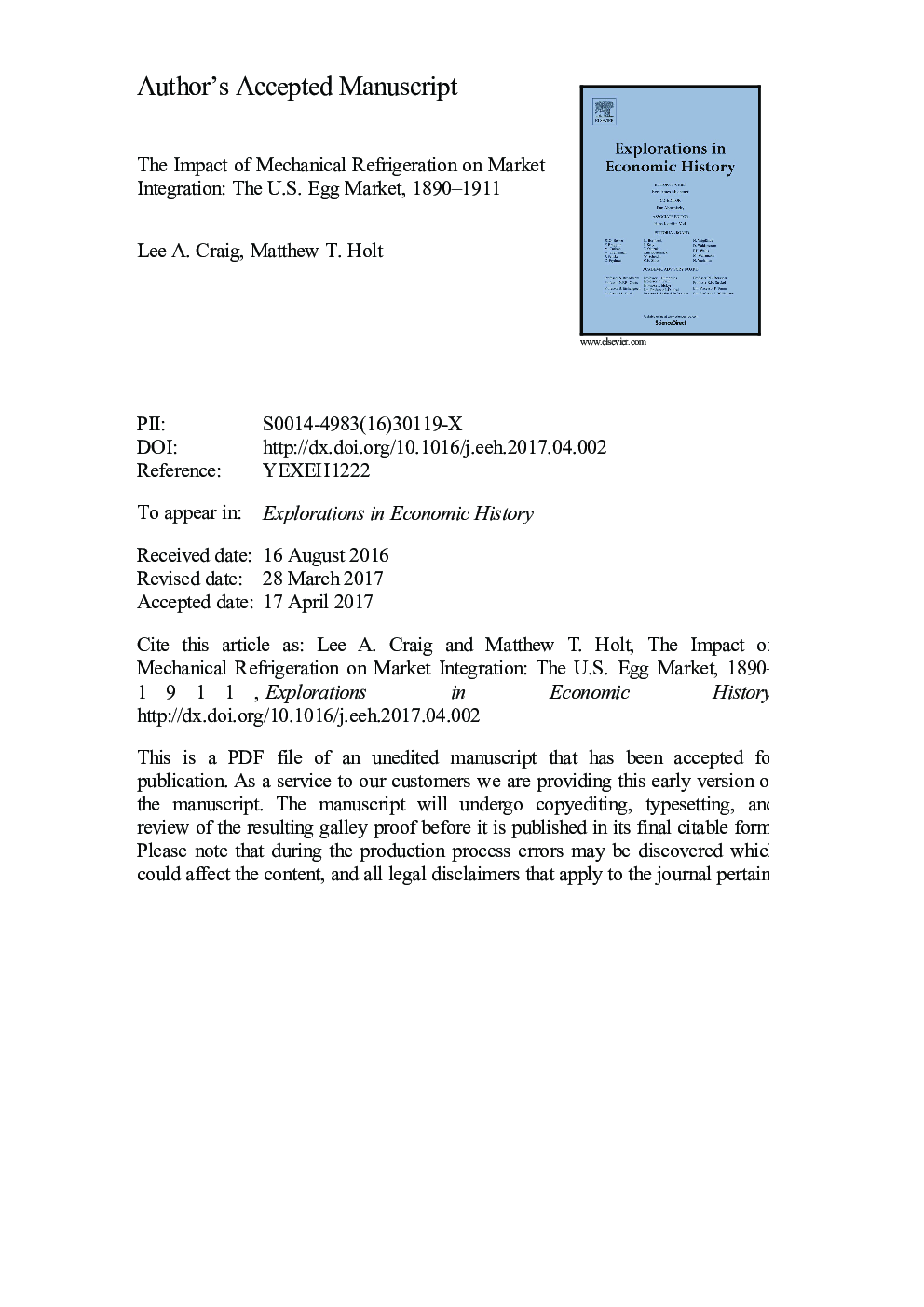| Article ID | Journal | Published Year | Pages | File Type |
|---|---|---|---|---|
| 7351947 | Explorations in Economic History | 2017 | 49 Pages |
Abstract
This paper examines the impact of mechanical refrigeration on temporal and spatial price relationships for regional egg markets in the United States, 1880-1911. Notably, this period encompasses an era in which widespread adoption of mechanical refrigeration facilitated the ability to store otherwise perishable commodities. This development in turn altered observed price dynamics for many perishables, including fresh eggs. We use a class of time series models, time-varying autoregressions (TVARs), to document both the structural change and the corresponding impact on spatial price dynamics for U.S. regional egg price relationships during the late 19th and early 20th centuries. Our results reveal that, while spatially distinct markets remained integrated, the opportunity to store eggs over time often resulted in weaker spatial price relationships for eggs.
Related Topics
Social Sciences and Humanities
Arts and Humanities
History
Authors
Lee A. Craig, Matthew T. Holt,
